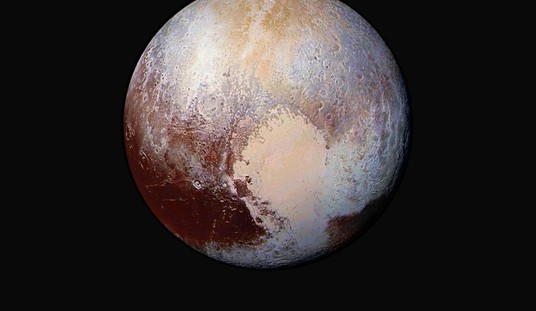A research expedition to study the effects of global warming aboard the Canadian Coast Guard icebreaker Amundsen is on hold as the icebreaker is needed to do it’s primary job — break up ice:
Heavy ice in Hudson Bay derails CCGS Amundsen's research plans http://t.co/HUUDCMStkm pic.twitter.com/DLlYFAcqjq
— CBC Canadian News (@CBCCanada) July 22, 2015
You don’t say…
According to a Coast Guard officer, the icy conditions are the “worst he’s seen in 20 years“:
A carefully planned, 115-day scientific expedition on board the floating research vessel, the CCGS Amundsen, has been derailed as the icebreaker was called to help resupply ships navigate heavy ice in Hudson Bay.
“Obviously it has a large impact on us,” says Martin Fortier, executive director of ArcticNet, which coordinates research on the vessel. “It’s a frustrating situation.”
During the summer, the Amundsen operates as a floating research centre with experiments running 24 hours a day. This year it was scheduled to reach North Baffin Bay.
But the icebreaker has been rerouted to escort commercial ships en route to resupply communities in Northern Quebec on the eastern side of Hudson Bay.
Johnny Leclair, assistant commissioner for the Coast Guard, said Tuesday conditions in the area are the worst he’s seen in 20 years.
Some pics of other ice breakers in the area:
Carving a path through ice in the Eastern Arctic with CCGS Pierre Radisson pic.twitter.com/1V3JWoIYFL
— DFO Central & Arctic (@DFO_Central) July 20, 2015
CCGS Terry Fox arrives with fuel and support to fishers drifting in ice near Akulivik pic.twitter.com/K14FtT4jd5
— DFO Central & Arctic (@DFO_Central) July 17, 2015
Here’s one of the scientists on the ship:
Science operations temporarily suspended CCGS Amundsen diverted for icebreaking interests Hudson Strait @geotraces @ArcticNet @NSERC_CRSNG
— Jay T. Cullen (@JayTCullen) July 20, 2015
Rounding the corner near Ivujivik to head south into Hudson Bay to break ice for ships working along the coast #ArcticGEOTRACES
— Jay T. Cullen (@JayTCullen) July 21, 2015
They don’t see how funny this is?
And here’s a blog post from the expedition describing the treacherous conditions:
More news from Canadian Arctic @geotraces Check out the blog http://t.co/LsYA0nUDR7
— Jay T. Cullen (@JayTCullen) July 21, 2015
An excerpt:
Meanwhile, we’ve run into ice and out of darkness. During our night of action, the sun didn’t set, so only the face of my watch was there to tell me that it was 3 AM as we were tying down incubators. At five thirty in the morning, as the sun rose – or, rather, got a bit brighter in the sky – filling the world with a deep pink, and the waves turned glassy and viscous and bright, our fingers finally fell numb and our setup was finally done, just in time for a quick nap before breakfast. Tonight, likely, we’ll see the stuck ships.
Here’s an idea. Since the global warming scientists are in the area, maybe they can switch their experiments and study the excess ice and how it’s affecting the ecosystem?
When life gives you frozen lemons, make lemon snow cones!
***
Related:
NASA scientists preach global warming at the Church of Scientology in Los Angeles
Photographic proof of effects of global warming deemed ‘Grade A Muppetry’
























Join the conversation as a VIP Member